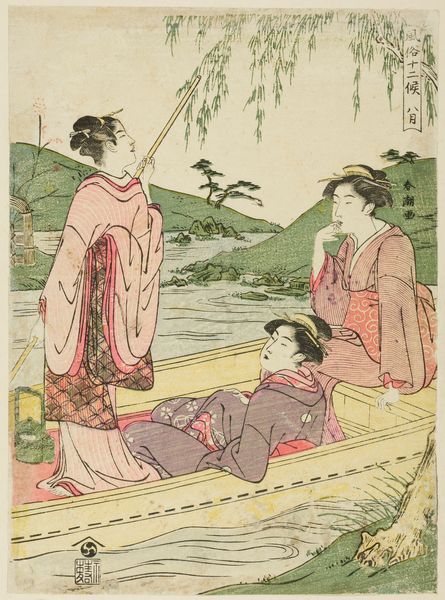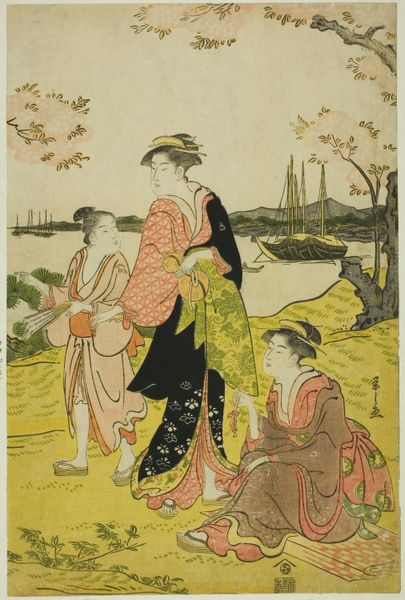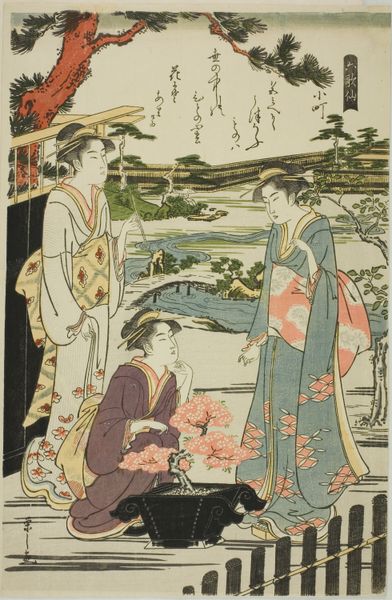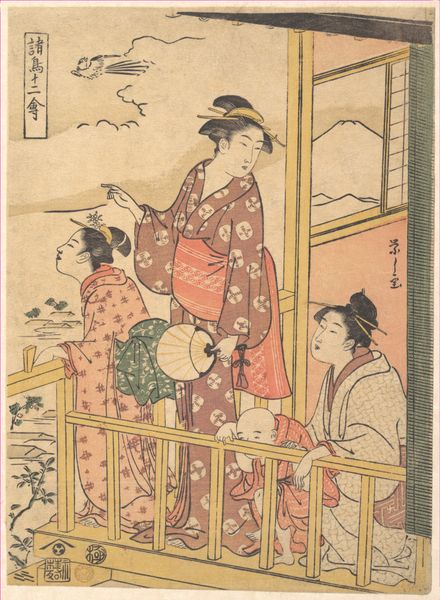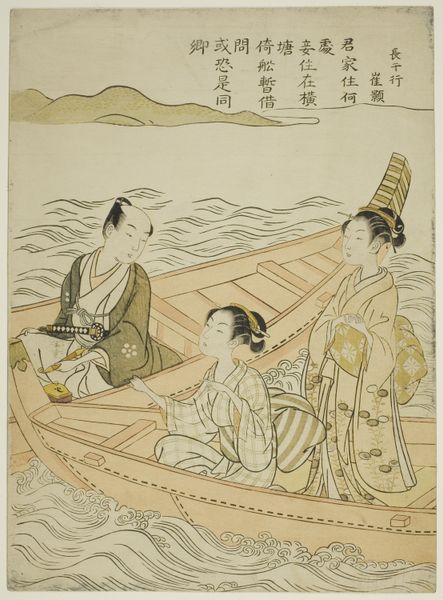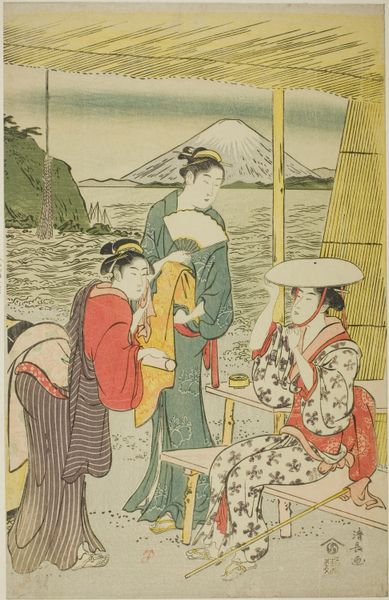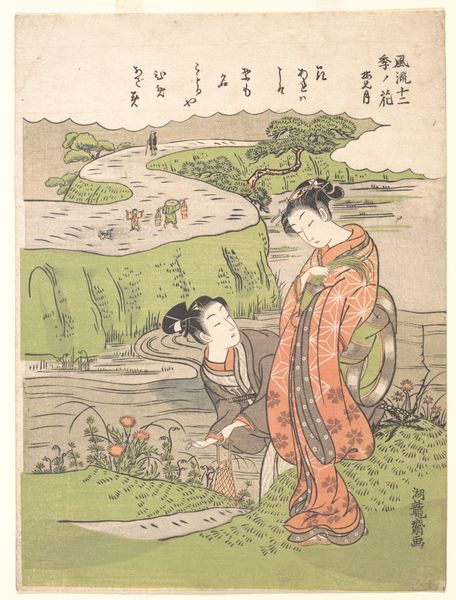
The Eighth Month (Nanryo), from the series a Calendar of Elegance (Furyu junikagetsu) c. 1788
0:00
0:00
print, textile
#
portrait
# print
#
asian-art
#
textile
#
ukiyo-e
#
genre-painting
Dimensions: 26.2 × 19.6 cm (10 1/4 × 7 3/4 in.)
Copyright: Public Domain
Editor: So, here we have Chobunsai Eishi’s "The Eighth Month (Nanryo), from the series a Calendar of Elegance," made around 1788. It's a beautiful Ukiyo-e print. I’m struck by the contrast between the figures inside and the landscape visible outside. What stands out to you most when you look at this image? Curator: My eyes are drawn to the cultural narratives embedded in seemingly simple scenes like this. Notice the details—the elegant kimonos, the meticulously arranged tea set, and the presence of fans. What emotional cues do these objects convey? Editor: They suggest a leisured lifestyle, perhaps affluence. But the woman standing looks a little detached from the group, almost wistful. Curator: Exactly. These objects act as powerful signifiers of status and cultural identity. The kimonos, especially, serve as textiles which become mobile records of their own cultural moment. This speaks to a broader narrative. This ‘floating world,’ celebrated in Ukiyo-e, often hides layers of social commentary. Can you imagine a story embedded here? Editor: Perhaps about the expectations placed on women, even within privileged circles? The one standing apart may be contemplating something beyond the present gathering. Curator: Precisely! And this is how art can offer a bridge. Visual culture like this speaks not just to us about 18th-century Japan but speaks back to Japan from our present cultural landscape and preoccupations. Editor: That's a perspective I hadn’t fully considered. It's like decoding a symbolic language embedded within everyday life. I guess visual literacy allows us to see it now. Curator: It does, doesn't it? By interpreting such cultural symbols, we learn much about ourselves. Editor: I’ll never look at a kimono the same way again! Thanks for sharing this approach, it really deepens my understanding.
Comments
No comments
Be the first to comment and join the conversation on the ultimate creative platform.
